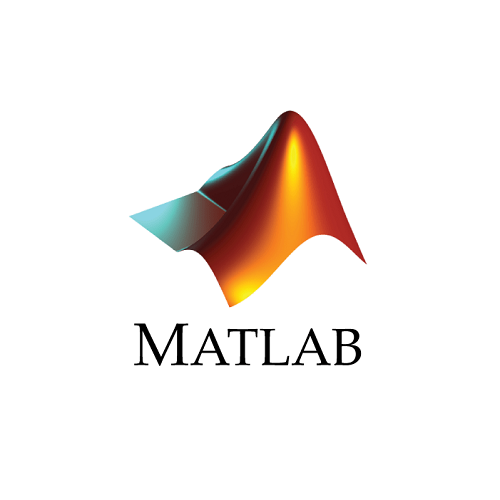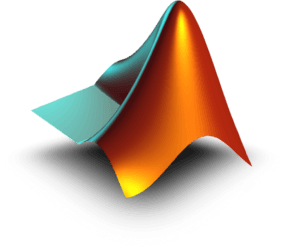Data Science Hands-On Project Guide
MATLAB Deep Learning Tutorial
In this MATLAB deep learning tutorial, We’re going to create a simple Deep learning MATLAB code that can classify all kinds of hand written digit images.

Introduction to Deep Learning
Deep learning is a specialized subset of machine learning that employs neural networks with multiple layers to process and analyze data. It has gained significant traction in recent years due to its ability to handle large volumes of unstructured data, which is increasingly prevalent in today’s digital landscape. Unlike traditional machine learning techniques, which often rely on manual feature extraction, deep learning automates this process, enabling models to learn intricate patterns directly from raw data.
One of the foundational components of deep learning is the artificial neural network (ANN), which mimics the neural structure of the human brain. ANNs consist of interconnected nodes (neurons) organized in layers: an input layer, one or more hidden layers, and an output layer. As data is fed into the network, the neurons process this information, adjusting their weights according to the error in the output compared to the expected result. This iterative learning process allows deep learning models to improve their accuracy over time, which is crucial in applications such as computer vision, natural language processing, and speech recognition.
The significance of deep learning extends beyond mere data analysis. In fields such as healthcare, finance, and autonomous vehicles, deep learning models have demonstrated the capacity to make real-time decisions that significantly surpass human capabilities in certain contexts. For instance, deep learning has revolutionized image classification tasks in computer vision, allowing software systems to accurately identify objects in images, which is essential for technologies like facial recognition and automated diagnostics.
Given the complexity and computational demands involved in deep learning, tools like MATLAB provide an advantageous environment for developing, training, and deploying deep learning models and working on Machine Learning Assignments. MATLAB deep learning capabilities facilitate rapid prototyping and streamline integration with other data analysis workflows, thereby establishing it as a suitable platform for both newcomers and seasoned professionals. Embracing these deep learning innovations can create transformative impacts across diverse industries.
Getting Started with MATLAB for Deep Learning
Embarking on a journey into the realm of deep learning using MATLAB requires a solid foundation, ensuring that your system is adequately equipped and properly configured. First and foremost, it is essential to review the system requirements for MATLAB, especially for the deep learning toolboxes. Typically, a compatible computer will feature a 64-bit operating system, a multi-core processor, and a sufficient amount of RAM, preferably 8GB or more, to efficiently handle large datasets and complex models.
Next, the installation process is straightforward. It begins by acquiring a license for MATLAB, which can be done through MathWorks’ official website. Upon successful purchase, users will receive instructions to download the installation files. It is advisable to ensure that the relevant toolboxes for deep learning, such as the Deep Learning Toolbox and the Parallel Computing Toolbox, are selected during the installation process. These toolboxes provide essential functions and frameworks needed for creating, training, and fine-tuning deep learning models.
One of the standout features of MATLAB for deep learning is its integrated environment that combines coding, visualization, and data analysis tools. MATLAB’s built-in functions streamline common deep learning tasks, such as image processing, data augmentation, and model evaluation, making it accessible even for users with limited programming expertise. The user-friendly interface accommodates both graphical and script-based inputs, allowing users to quickly prototype their models and visualize results via plots and charts. Furthermore, MATLAB supports popular deep learning frameworks, enabling users to import pre-trained models created in environments like TensorFlow and PyTorch.
As budding practitioners acquire familiarity with MATLAB deep learning, they will benefit from extensive documentation and online resources provided by MathWorks. These resources include tutorials, user forums, and examples that foster a deeper understanding of both fundamental concepts and advanced techniques in deep learning.
Understanding Neural Networks
Neural networks are a fundamental component of deep learning, mimicking the structure and functioning of the human brain. At their core, these networks consist of layers comprised of interconnected nodes, known as neurons. Each neuron receives input from the previous layer, processes this information through a weighted sum, and applies an activation function to determine the output. The architecture of neural networks typically includes an input layer, one or more hidden layers, and an output layer, facilitating the transformation of input data into meaningful predictions or classifications.
In deep learning, the weight parameters attached to the connections between neurons play a critical role in learning. These weights are adjusted during the training process, where the network learns from a dataset by minimizing a loss function. This iterative training process allows the neural network to improve its predictive accuracy over time. Various activation functions, such as ReLU (Rectified Linear Unit) and sigmoid, are employed to introduce non-linearity into the model, enhancing its capability to learn complex patterns.
Several types of neural networks have emerged to address different types of data and tasks. Feedforward networks are the simplest type, where information flows in one direction—from input to output—without cycles. Convolutional neural networks (CNNs) are particularly effective for image processing tasks, utilizing convolutional layers to extract features, and are widely implemented in MATLAB due to its robust toolset for image analysis. Recurrent neural networks (RNNs), on the other hand, are designed to handle sequential data, such as time series or natural language, making them suitable for tasks requiring context over time.
By leveraging MATLAB’s capabilities, practitioners can seamlessly implement these various neural network architectures, harnessing their power for diverse applications of MATLAB, from image recognition to predictive modeling. The integration of MATLAB deep learning toolboxes simplifies the process of designing, training, and deploying these advanced models, thereby accelerating the journey towards effective deep learning solutions.
Watch MATLAB Deep Learning Tutorial on YouTube
You’ll learn how to explore image data, design the network architecture, set up training options, and train the network on MATLAB code. And once the network is trained, we’ll show you through this Deep Learning tutorial, how to use it to predict labels and calculate the accuracy of the predictions.
Building Your First Deep Learning Model in MATLAB
Creating a deep learning model in MATLAB involves several sequential steps, beginning with data preparation. The quality and structure of your data significantly influence your model’s performance. Start by importing your dataset into the MATLAB workspace. For deep learning tasks, data should ideally be in a format suitable for modeling, such as images or structured numerical data. Use functions like imageDatastore for images or table for structured data to efficiently manage and preprocess your data.
Once the data is ready, the next step is selecting the appropriate deep learning architecture. MATLAB provides a variety of pre-built networks, which can be found in the Deep Learning Toolbox. Common architectures include Convolutional Neural Networks (CNNs) for image classification tasks and Recurrent Neural Networks (RNNs) for sequential data. You may choose to fine-tune a pre-trained model using transfer learning, which significantly accelerates the training process and enhances accuracy by leveraging existing knowledge.
Need Help in Programming?
I provide freelance expertise in data analysis, machine learning, deep learning, LLMs, regression models, NLP, and numerical methods using Python, R Studio, MATLAB, SQL, Tableau, or Power BI. Feel free to contact me for collaboration or assistance!
Follow on Social

After choosing your model, proceed to configure the training options. This involves setting hyperparameters such as learning rate, batch size, and the number of epochs. MATLAB allows users to customize these parameters using the trainingOptions function. It’s crucial to ensure that your model is trained on a representative dataset to avoid overfitting or underfitting.
Once the training is finalized, it is essential to evaluate your model. Use a designated test dataset to assess performance metrics such as accuracy, precision, and confusion matrices. MATLAB offers functions like classify and plotconfusion to help visualize and interpret results effectively. This hands-on approach provides a solid foundation for creating and understanding deep learning models using MATLAB, paving the way for further exploration and complex implementations in the realm of artificial intelligence.
Training and Optimizing Deep Learning Models
Training deep learning models is a critical step in leveraging MATLAB deep learning capabilities. One key aspect of this process is hyperparameter tuning, which involves adjusting model settings to improve performance. In MATLAB, hyperparameters such as learning rate, batch size, and number of epochs significantly affect how well the model learns from the training data. For instance, using the trainingOptions function, practitioners can define various parameters that influence the learning process, enabling fine-tuning to achieve optimal results.
Another vital consideration in deep learning model training is the choice of optimizers. Different optimizers, such as Stochastic Gradient Descent (SGD), Adam, or RMSprop, can yield different performance outcomes based on the architecture of the model and the nature of the data. MATLAB provides built-in support for various optimizers through its trainNetwork function, which allows users to experiment with different approaches to find the most effective optimizer for their specific application.
Learn MATLAB with Free Online Tutorials
Explore our MATLAB Online Tutorial, your ultimate guide to mastering MATLAB! his guide caters to both beginners and advanced users, covering everything from fundamental MATLAB concepts to more advanced topics.

Moreover, avoiding overfitting is paramount to enhance the generalization of deep learning models. Techniques such as dropout, batch normalization, and data augmentation can be employed to combat this issue. Implementing dropout layers in a MATLAB-based network is straightforward, using the dropoutLayer function, which randomly sets a fraction of the input units to zero, effectively making the model robust against overfitting. Similarly, data augmentation can enhance model robustness by artificially enlarging the dataset through transformations such as rotation, scaling, or flipping.
In summary, the training and optimization of deep learning models in MATLAB require a comprehensive approach involving hyperparameter tuning, optimizer selection, and strategies to prevent overfitting. By leveraging the built-in functionalities and best practices within the MATLAB environment, practitioners can significantly improve the efficacy and reliability of their deep learning applications.
MATLAB Assignment Help
If you’re looking for MATLAB assignment help, you’re in the right place! I offer expert assistance with MATLAB homework help, covering everything from basic coding to complex simulations. Whether you need help with a MATLAB assignment, debugging code, or tackling advanced MATLAB assignments, I’ve got you covered.
Why Trust Me?
- Proven Track Record: Thousands of satisfied students have trusted me with their MATLAB projects.
- Experienced Tutor: Taught MATLAB programming to over 1,000 university students worldwide, spanning bachelor’s, master’s, and PhD levels through personalized sessions and academic support
- 100% Confidentiality: Your information is safe with us.
- Money-Back Guarantee: If you’re not satisfied, we offer a full refund.

Advanced Deep Learning Techniques with MATLAB
Deep learning has revolutionized various fields, enabling breakthroughs in image recognition, natural language processing, and beyond. Among the tools available, MATLAB provides a rich environment for implementing advanced techniques that enhance model accuracy and efficiency. Three prominent methods in deep learning are transfer learning, data augmentation, and model ensembling, each offering unique advantages when integrated into MATLAB workflows.
Transfer learning allows practitioners to leverage pre-trained models, which significantly accelerates the training process. In scenarios where training data is scarce, transfer learning enables users to fine-tune existing neural networks trained on extensive datasets. MATLAB simplifies this process through its functions, allowing for easy modification of architectures, while providing access to a variety of pre-trained models. By adapting established models for specific tasks, one can achieve impressive results even with limited resources.
Data augmentation is another essential technique in the Matlab deep learning toolkit. It involves generating synthetic variations of the training datasets to enhance model robustness and generalization. MATLAB facilitates diverse augmentation methods, including rotation, scaling, cropping, and flipping of images. This not only helps in overcoming the challenge of overfitting but also boosts the performance of the learning models across various unseen data. Users can configure their data preparation pipelines seamlessly, ensuring that their neural networks are exposed to richly varied inputs.
Moreover, model ensembling is an advanced strategy that entails combining multiple models to improve prediction accuracy. MATLAB supports various ensembling techniques, including bagging and boosting. By aggregating predictions from diverse models, users can mitigate the risk of poor performance due to overfitting and enhance resilience against noise. This approach allows for the melding of strengths from different architectures, yielding superior models capable of handling nuanced tasks effectively.
In conclusion, the combination of transfer learning, data augmentation, and model ensembling in MATLAB exemplifies the platform’s powerful capabilities in the domain of deep learning. By employing these advanced techniques, practitioners can navigate complex machine learning challenges and improve their outcomes significantly.
Real-World Applications of MATLAB Deep Learning
MATLAB deep learning has emerged as a powerful tool across various industries, addressing complex problems with innovative solutions. The versatility and comprehensive functionality of MATLAB make it an ideal environment for developing deep learning models that can be applied to real-world challenges. One prominent field where this technology is significantly impacting is healthcare. By leveraging MATLAB’s advanced algorithms, researchers and clinicians can analyze medical images with remarkable accuracy, facilitating the early detection of diseases such as cancer. For instance, custom deep learning models built in MATLAB have been employed to develop systems that can identify tumors in radiographic images, yielding faster and more reliable diagnostic results.
In addition to healthcare, finance is another sector benefiting from MATLAB deep learning capabilities. Financial institutions utilize deep learning for tasks such as fraud detection, risk assessment, and algorithmic trading. By training models on historical financial data, these institutions can predict market trends and identify anomalies indicative of fraudulent activities. MATLAB’s robust data handling and visualization capabilities empower financial analysts to interpret results effectively, leading to more informed decision-making.
The automotive industry is also harnessing the power of deep learning through MATLAB, particularly in the development of autonomous vehicles. Engineers use MATLAB‘s deep learning tools to create neural networks that process vast amounts of data from sensors and cameras, enabling vehicles to navigate complex environments. This application of MATLAB deep learning not only enhances safety but also optimizes performance by allowing vehicles to adapt to changing conditions in real time.
These case studies illustrate the profound impact of MATLAB deep learning across different sectors. As organizations continue to adopt this technology, the potential for innovative applications and improved outcomes will only increase, reinforcing the importance of deep learning in shaping the future of numerous industries.
Troubleshooting Common Issues
Deep learning applications within MATLAB can frequently present challenges that may hinder model development and performance. One of the most prevalent issues is related to data quality. It is crucial to ensure that the dataset used is sufficiently large and representative of the problem domain. Incomplete or irregular data can lead to ineffective training, resulting in overfitting or underfitting of the model. It is advisable to perform data preprocessing steps such as normalization, augmentation, and cleaning to enhance the integrity of the dataset before employing MATLAB deep learning functionalities.
Another common obstacle encountered is the interpretation of error messages generated during the training process. MATLAB provides detailed warnings and error notifications which are designed to assist users in identifying what went wrong. For instance, if the model fails to converge, reviewing the training parameters, such as the learning rate or number of epochs, can often illuminate potential adjustments. Additionally, consulting the MATLAB documentation can aid in understanding specific error codes and implementing corrective actions efficiently.
Debugging deep learning models can also be a cumbersome task, and MATLAB offers several utilities to assist in this area. Utilizing built-in functions like `analyzeNetwork` can provide insight into network architecture and data flow, which is vital for troubleshooting issues. In the event of persistent problems, breaking down the model into smaller components for isolated testing can help identify bottlenecks. Furthermore, leveraging MATLAB’s visualization tools can help in tracking the training process and discovering discrepancies in model performance. By employing these methodologies, users can cultivate a smoother and more effective deep learning experience within MATLAB.
Future Trends
The landscape of deep learning is rapidly evolving, with emerging trends that are shaping the future of this transformative technology. As researchers and developers continue to explore new algorithms and frameworks, MATLAB stands to play a pivotal role in facilitating these advancements. One of the notable trends is the increasing integration of deep learning with edge computing. This shift enables models to process data closer to the source, reducing latency and bandwidth issues. MATLAB is already equipped with tools that support edge deployment, making it an ideal platform for developing and refining these decentralized models.
Another significant trend is the development of more interpretable and explainable deep learning models. As the complexity of neural networks grows, so does the need for clarity in how decisions are made. MATLAB’s capabilities in visualizing data and modeling can greatly enhance the interpretability of deep learning processes. By leveraging these tools, researchers can better understand model behavior, making them more accountable and trustworthy in critical applications such as healthcare and autonomous driving.
Additionally, the growing demand for real-time analytics is pushing innovations in deep learning frameworks. The ability to analyze vast amounts of data in real-time is becoming essential in various fields, from finance to customer service. MATLAB’s support for parallel computing and GPU acceleration is perfectly aligned with this trend, enabling researchers to build and train deep learning models that can handle real-time data processing efficiently.
In summary, the future of deep learning is poised for significant developments, and MATLAB is well-positioned to be at the forefront of this innovation. Through its advanced tools and capabilities, MATLAB is likely to support researchers and developers as they navigate the complexities of deep learning. The potential for MATLAB deep learning to revolutionize various industries is immense, and its ability to adapt to future trends will enhance its relevance in the years to come.